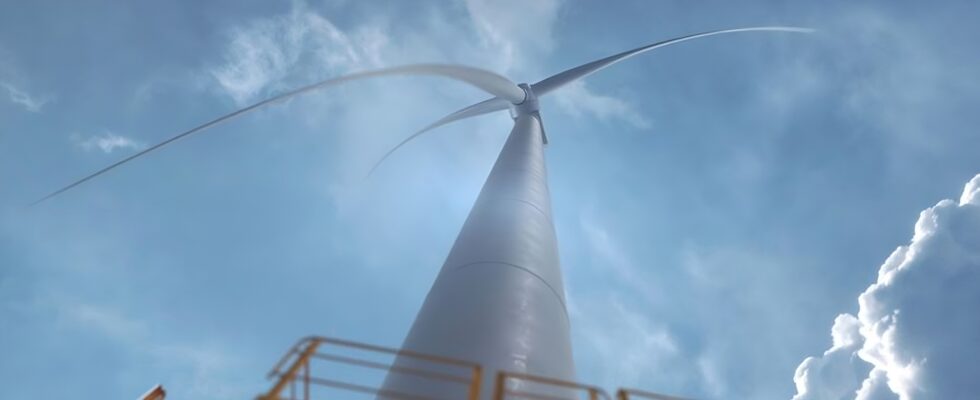A wind farm off England will be the first to be equipped with blades over 100 meters long which can be recycled at the end of their life.
Wind energy is an essential tool for the energy transition, as evidenced by the number of wind farms completed and under construction in Europe alone. However, this industry, like any other, has its few flaws. Among others, it is often highlighted the case of the blades which accumulate in landfills in the open or buried by the tens.
” A remarkable achievement »
Siemens Gamesa has set out to solve this problem by introducing recyclable models to the market. Called RecyclableBlade, this technology recovers almost all of their components, such as resin, fiberglass and wood, using a mild acid-based solution. They can then be reused in other sectors, such as the automotive industry or the manufacture of consumer goods.
The German giant RWE was the first to benefit from this technology by equipping, in 2022, the wind turbines of its Kaskasi offshore park with recyclable blades 81 meters long. Convinced, the company placed another order for its fleet called Sofia, off the coast of the United Kingdom. However, the blades here are 108 meters long, which is more in line with the larger and more powerful installations that are emerging all over the world.
Marc Becker, CEO of Siemens Gamesa’s offshore business, said: When we started working with RWE on the Kaskasi project, we knew that we had taken the first important steps to bring about decisive change in the wind energy sector. Having the opportunity to produce and install 132 recyclable blades for the Sofia project is a remarkable achievement. »
A wind that turns well for wind turbines
Indeed, only 44 of the 100 SG 14-222 DD offshore wind turbines in Sofia will be equipped with this type of blade, Siemens Gamesa not being able to supply more at the moment. After taking up the challenge of recycling, the company must now keep up with the frenetic pace of a growing sector. In the meantime, RWE’s last offshore farm is expected to be operational in 2026 and power more than a million homes in the UK.
Vestas, the Danish wind power giant, has also addressed the issue by developing a process to reuse components of conventional models, so far considered non-recyclable. The company’s goal is to create a circular economy where old blades can be used to create new ones.
Thus, the industry is giving itself the means to get rid of one of its biggest flaws, and in several ways moreover. Less harmful to the planet and perhaps not as harmful to wildlife contrary to what one might think, wind turbines are gradually fending off criticism from their detractors to establish themselves as one of the main sources of energy for tomorrow.
Source : Electrek

11